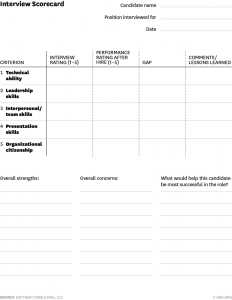By Tim Ringel
You can’t go a step in the advertising and marketing world these days without running into someone’s hot new application of artificial intelligence (AI) technology. It’s the shiny new object of the moment that has captured our attention, and it’s driving agencies and brands into a mad dash to be first to market.
Admittedly, AI can offer us lots of advantages and innovations, and I gladly acknowledge that it’s important for the future of business. However, just like when we raced to be the first to launch branded NFTs, hurriedly adopted social media once it started exploding, or rushed to get our web pages up in the mid-1990s, I fear we’re pushing forward without much of a plan.
Instead of focusing immediately on the kind of technology, channel, or tactic we’re using, let’s take a quick breath and remember why we’re doing what we do. Because whenever I have a conversation with a C-suite executive or business owner, they’re only focused on two things:
In our eagerness to show expertise and forward thinking, we too often forget a simple truth: No matter how much the technology or media changes, the fundamentals of achieving business goals and creating positive customer experiences do not. So, no matter how cool a new technology may seem, it accomplishes little if we don’t consider whether it improves the customer’s perception and purchase-readiness for the brand.
Always apply your marketing basics
Over the last century, the basics of marketing have changed very little—because they work. We have a core set of tools that allow us to create awareness, generate sales, and create advocacy. We call it the customer lifecycle. And it clearly defines where the customer is in their relationship with a brand, guiding us to the next reasonable interaction with them.
Whether we’re talking radio, TV, digital, mobile, out of home, or any media you can think of, the fundamentals remain true. For every marketing challenge, we first look at where the customer is in the lifecycle, we determine which media is best for reaching them, and then we send out an appropriate marketing message.
The hype around AI would seem to suggest that it reinvents this process—that somehow AI can be applied in every use case and every situation. Let me assure you, it doesn’t and it shouldn’t.
AI provides executional advantages. Sending out more personalized messages, enhancing response time on customer requests, or generating creativity in the blink of an eye are amazing features. But these advantages become meaningless if your system sends out an invasively personal email at the wrong point in the lifecycle.
We always need to know why we’re using a media or technology each time we apply it. Because the customer matters and we need to follow their lead to know why, when, and how they would like to receive communications from us.
Avoid solutions that don’t serve your customers
Some of the biggest advantages of new martech and adtech solutions come down to efficiency and cost savings. AI in particular is lauded for its ability to simplify complex tasks and make the workplace more productive.
The trouble is we’re kidding ourselves if we believe that our internal efficiency positively impacts the customer’s experience in any perceivable way. It certainly doesn’t contribute to growing sales, that’s for sure. It simply dehumanizes consumer interactions for the sake of cost cutting.
On the surface, a faster response time might be able to improve the customer experience when contacting a brand, and a more personalized message that’s timed perfectly may better inspire a customer to respond. However, when most AI today can’t even pass a Turing test, why would we entrust our entire customer pipeline to its flawed reasoning?
Again, the basics apply here. We are in the business of serving customers in marketing. Assuming this is true, we need to always measure our solutions against the lens of: Is this serving my customers and improving their experience as I try to meet my company’s goals? If not, we need to question the usefulness of the tactic.
Evolve the rules rather than just breaking them
Shiny new things are great fun. I get it. They allow us to push the boundaries of what’s possible and evolve the marketing world in interesting ways. But we need to embrace the basics first. The rules are there for good reason, and if we break them all without any consideration to why they were there in the first place, we may find ourselves doing more harm than good to our brands and our customer relationships.
Tim Ringel is a cofounder and global CEO of Meet The People.
(0)








